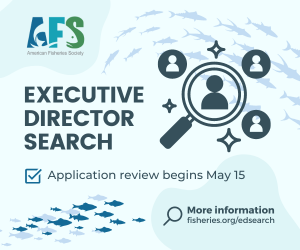Fish and Wildlife Scientists Commend Introduction of Recovering America’s Wildlife Act
BETHESDA, MD – Today, fisheries and wildlife professionals from across the United States welcomed the introduction of groundbreaking legislation that will empower natural resource managers to conserve at-risk species for generations to come.
The Recovering America’s Wildlife Act (S. 2372), introduced by Senators Martin Heinrich (D-NM) and Roy Blunt (R-MO), will secure $1.3 billion in dedicated funding annually for state fish and wildlife agencies and $97.5 million annually for tribal nations to proactively and cost-effectively conserve the nation’s most at-risk species.
“There has never been a more pressing time than now to rise to the challenge of conserving the country’s most at-risk species” said Dr. Carol Chambers, President of The Wildlife Society. “Through Senator Heinrich’s and Senator Blunt’s leadership, fish and wildlife professionals will have more robust tools to advance science-based natural resource conservation and ensure fish and wildlife populations are sustained for future generations.”
Through this recent action, Senators Heinrich and Blunt are leading efforts to provide a new funding approach that would address steep declines in the nation’s remarkable biodiversity. The Senate introduction builds on the leadership from Representatives Debbie Dingell (D-MI), Jeff Fortenberry (R-NE), and over 80 of their House colleagues who have endorsed the House companion bill (H.R. 2773).
“Increases in water temperatures, lack of water in streams and rivers, poor water quality, and loss of habitat have led to 40 percent of freshwater species now being at risk and unfortunately, a changing climate means the situation will only get worse. With a dedicated stream of funding, we can implement science-based conservation plans that will build resilience in the face of climate change.” said Doug Austen, Executive Director, American Fisheries Society.
State fish and wildlife agencies have identified 12,000 species at-risk of becoming threatened or endangered through detailed, proactive conservation blueprints known as State Wildlife Action Plans. The Recovering America’s Wildlife Act will enable implementation of these plans, empowering fish and wildlife professionals to effectively work with partners towards conservation successes and prevent species from becoming endangered and listed under federal law.
# # #
Founded in 1870, the American Fisheries Society (AFS) is the world’s oldest and largest fisheries science society. The AFS mission is to improve the conservation and sustainability of fishery resources and aquatic ecosystems by advancing fisheries and aquatic science and promoting the development of fisheries professionals. With its renowned journals, books and conferences, AFS is the leading source of fisheries science and management information in North America and around the world. fisheries.org
Founded in 1937, TWS and its network of affiliated chapters and sections represent more than 15,000 professional wildlife biologists, managers, and educators dedicated to excellence in wildlife stewardship through science and education. TWS’ mission is to inspire, empower, and enable wildlife professionals to sustain wildlife populations and habitat through science-based management and conservation. wildlife.org
To learn more about TWS’ and AFS’ efforts on the Recovering America’s Wildlife Act, check out the Reversing America’s Wildlife Crisis report, a collaboration between TWS, AFS, and the National Wildlife Federation. This report calls attention to North American and migratory wildlife species facing population declines due to a variety of threats. It echoes the intent of the Recovering America’s Wildlife Act in calling for more proactive management to prevent these declines and an improved funding mechanism to support such efforts.





